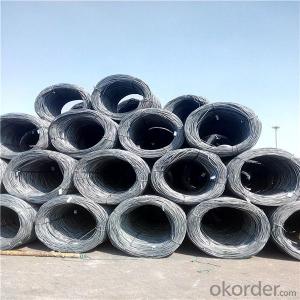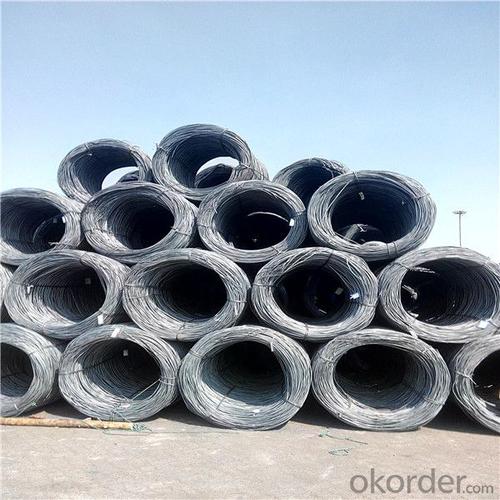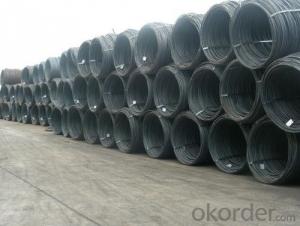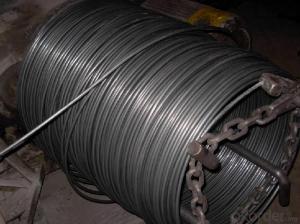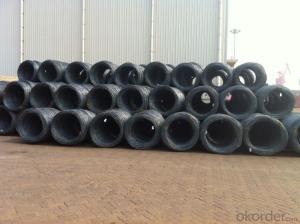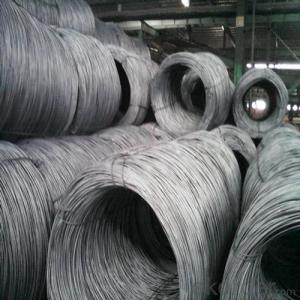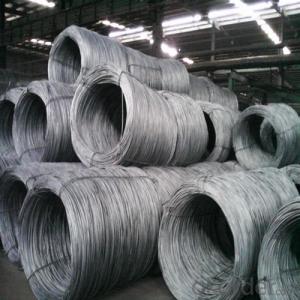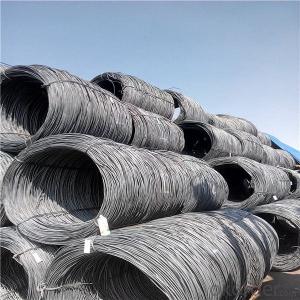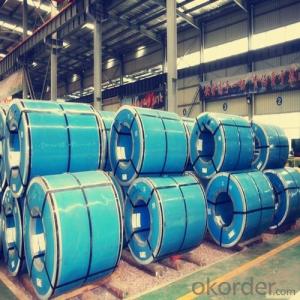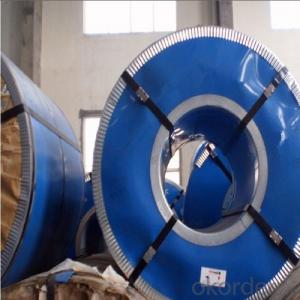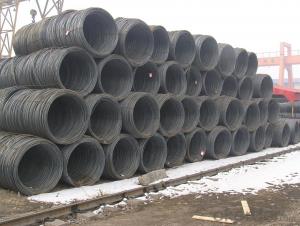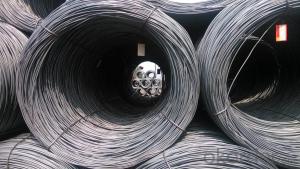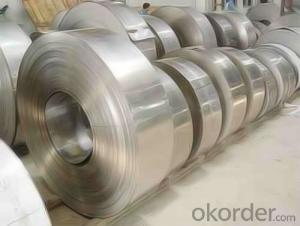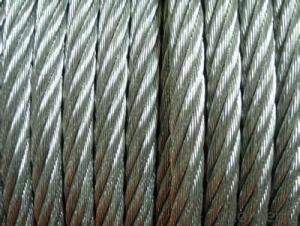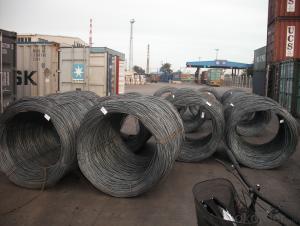Steel wire rod prices in coil hot rolled for construction
- Loading Port:
- Tianjin
- Payment Terms:
- TT OR LC
- Min Order Qty:
- 100 m.t.
- Supply Capability:
- 13256 m.t./month
OKorder Service Pledge
OKorder Financial Service
You Might Also Like
Specification
Mainly used in building and construction as binding wire, tie wire and baling wire; also can be make for wire mesh.
Wire rod is a rolled alloy or nonalloy steel product, produced from a semi (e.g. bloom) and having a round, rectangular
or other cross-section. Particularly fine cross-sections may be achieved by subsequent cold forming (drawing). Wire
rod is wound into coils and transported in this form.
Our service:
(1) We cooperate with famous factories with advanced equipment and well trained workers.
(2) We can provide factory price with trading company service.
(3) We continuously work on the improvement of our processes, guaranteeing
consistently high standards of quality to keep none compensation.
(4) We guarantee 24 hours response and 48 hours solution providing service.
(5) We accept small order quantity before formal cooperation.
(6) We deliver the agreed quality at the agreed time, reacting to changes in
customer wishes in a flexible way.
(7) Due to our volume and selling power, we have excellent freight rates with
shipping lines.
(8) We strive to always be fair and honest in our dealings with customers.
(9) We strive to work together with customers to achieve much more than we can
achieve alone.
(10) Through our passion and commitment we aim to be a market leader in all our
key markets. To maintain our position as market leader we must continue to add
value in all that we do.
Product Description :
Standard | AISI, ASTM, BS, DIN, GB, JIS |
Material/steel grade | Q195-Q235,SAE1006B,SAE1006CR, SAE1008B, SAE1008CR, SAE1010B, SAE1018B, or according to customers requirements |
Wire Gauge | 5.5-12mm |
Coil weight | 1.8-2.1mts |
MOQ | 25MT |
Delivery Time | 15-30 days after receipt of L/C or deposit by T/T |
Packing | In coil and load in container, if large quantity, by bulk vessel; Can be packed as customers' special requirements |
Payment terms | 1).100% irrevocable L/C at sight. 2).30% T/T prepaid and the balance against the copy of B/L. 3).30% T/T prepaid and the balance against L/C |
Application | widely used in machinery parts, manufacturing industry, electronics industry, metal tools and others |
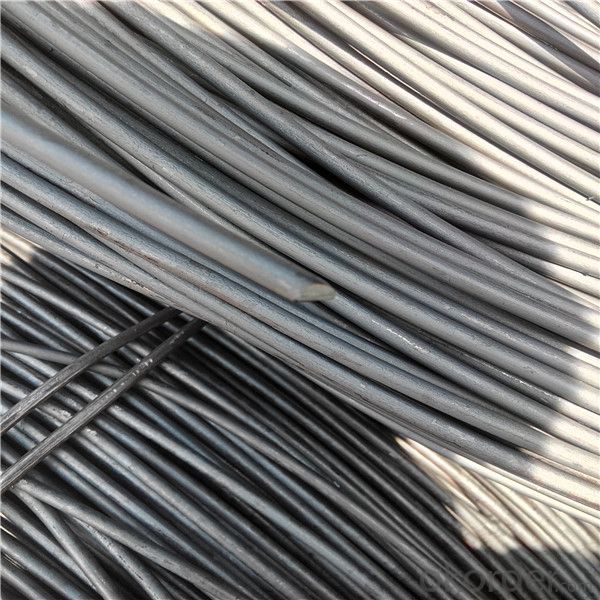
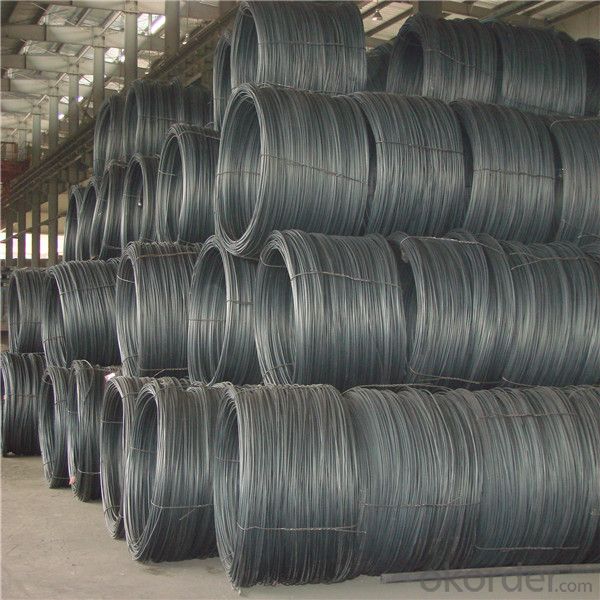
Application :
Mainly used in building and construction as binding wire, tie wire and baling wire; also can be make
for wire mesh.
Packing :
Hot-rolled wire rod is held in a unit with at least four steel straps in the
transverse direction and transported and stored without further packaging.
Before
the steel strapping is applied, the wire rod must be sufficiently compressed.
The strapping is fixed in the transverse direction with a single circumferential
strap so that the strapping does not slip and cause the coil to come apart.
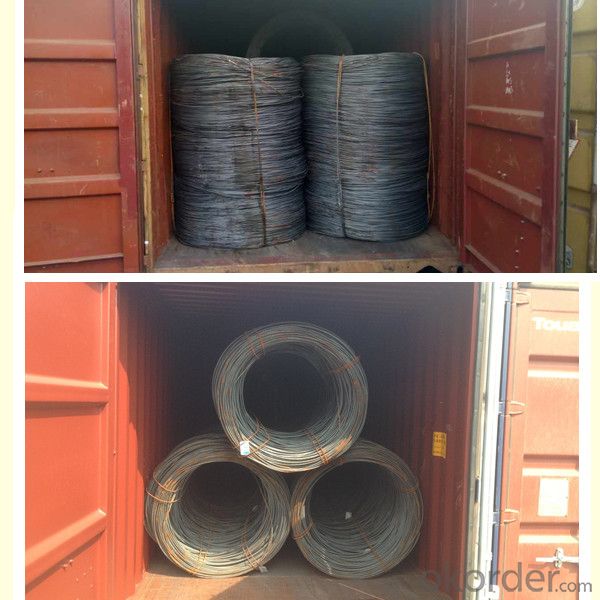
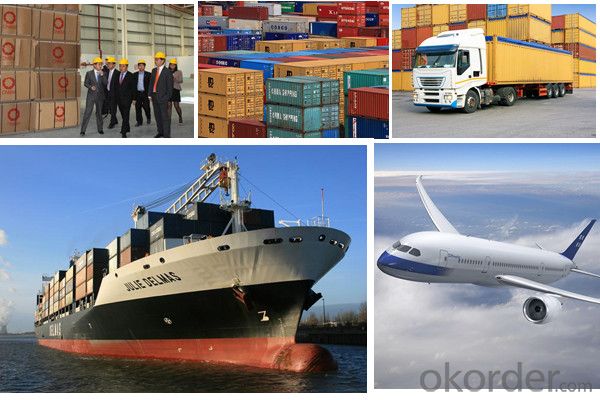
FAQ:
1.Q:Can you accept mixed order?
A: Yes, mixed acceptable .
2. Q: How can I buy CNBM products in my country?
A:Please send us an inquiry or email ,we will reply to you if there is distributor in your country
3. Q: Can we visit your factory?
A: Warmly welcome. Once we have your schedule, we will arrange the
professional sales team to follow up your case.
4. Q: How long does it take to get the product if i place an order?
A:With the process of your requirements,we will pack and deliver in 3
-7 days. If it is by sea shipment,it will take 15-45 days depending on different locations
- Q: How is steel wire rod used in the production of wire ropes for elevators?
- Steel wire rod is a crucial component used in the production of wire ropes for elevators. The wire ropes used in elevators are designed to provide strength, durability, and safety. The steel wire rod serves as the raw material for manufacturing these ropes. During the production process, the steel wire rod goes through several steps to transform it into wire ropes for elevators. Firstly, the rod is cleaned and inspected to ensure its quality. Then, it is heated and passed through a series of dies to gradually reduce its diameter. This process, known as drawing, helps to increase the strength and flexibility of the wire. After the drawing process, the wire is galvanized to provide corrosion resistance. Galvanization involves coating the wire with a layer of zinc, which helps to prevent rust and corrosion, ensuring the longevity of the wire ropes. Once the wire is galvanized, it is twisted and braided into strands. These strands are then combined and twisted together to form the final wire rope. The number of strands and the direction of the twist may vary depending on the specific requirements of the elevator application. The resulting wire rope, made from steel wire rod, offers exceptional strength and flexibility, making it suitable for supporting heavy loads and enduring constant movement. It provides stability and safety, allowing elevators to function reliably and efficiently. In conclusion, steel wire rod plays a critical role in the production of wire ropes for elevators. The wire rod is transformed through various processes, including drawing and galvanization, to create strong and durable wire ropes that can withstand the demanding conditions of elevator operations.
- Q: How is steel wire rod used in the manufacturing of wire mesh sieves?
- Steel wire rod is used in the manufacturing of wire mesh sieves as it serves as the raw material for creating the wire mesh. The wire rod is drawn down to the desired diameter and then woven or welded together to create the mesh pattern. This allows for the production of sturdy and durable sieves that can effectively separate particles and materials in various industries such as mining, construction, and agriculture.
- Q: Can steel wire rod be used in the production of reinforcing bars?
- Yes, steel wire rod can be used in the production of reinforcing bars.
- Q: What are the common production processes for tungsten-coated steel wire rod?
- The common production processes for tungsten-coated steel wire rod typically include wire drawing, cleaning, coating, and heat treatment. Initially, the steel wire rod is drawn through a series of dies to reduce its diameter and improve its surface finish. After the wire drawing process, the wire rod is cleaned to remove any impurities. Then, a layer of tungsten is applied to the surface of the wire rod through various coating techniques such as electroplating or vapor deposition. Finally, the coated wire rod undergoes a heat treatment process to enhance the adhesion between the tungsten coating and the steel wire, resulting in a durable and high-quality product.
- Q: What are the different types of wire drawing processes used for steel wire rod?
- There are several different types of wire drawing processes that are commonly used for steel wire rod. These processes include: 1. Pointing: This process involves reducing the diameter of the wire rod by passing it through a series of dies. The wire rod is pulled through the dies, which gradually decrease in size, until the desired diameter is achieved. This process is typically used for smaller diameter wires. 2. Bull block: In this process, the wire rod is passed through a series of rotating cones or blocks. The cones have grooves that decrease in size, causing the wire rod to be reduced in diameter as it is pulled through. This process is commonly used for larger diameter wires. 3. Continuous rotary drawing: In this process, the wire rod is fed through a series of rotating dies. As the wire rod passes through the dies, it is gradually reduced in diameter. This process can be used for both small and large diameter wires. 4. Multi-pass drawing: This process involves passing the wire rod through a series of drawing dies in multiple stages. Each pass through the dies reduces the diameter of the wire rod. This process is often used for wires with very small diameters and requires multiple drawing stages to achieve the desired final diameter. 5. Tube drawing: This process is similar to wire drawing but is used to produce hollow tubes. The wire rod is pulled through a die with a mandrel inside, which helps to shape the wire rod into a tube. This process is commonly used for the production of seamless steel tubes. Overall, these different types of wire drawing processes provide manufacturers with various options for reducing the diameter of steel wire rod and producing wires of different sizes and shapes to meet specific requirements.
- Q: How is steel wire rod tested for resistance to crevice corrosion?
- Steel wire rod is tested for resistance to crevice corrosion through various methods, including visual inspection, weight loss measurement, electrochemical testing, and exposure to corrosive environments. These tests help determine the susceptibility of the steel wire rod to crevice corrosion, which is crucial for ensuring its durability and performance in different applications.
- Q: How is the impact resistance of steel wire rod tested?
- The impact resistance of steel wire rod is typically tested using a Charpy impact test. In this test, a notched specimen of the wire rod is subjected to a swinging pendulum that strikes and breaks the specimen. The energy absorbed by the specimen during fracture is measured, which provides an indication of its impact resistance.
- Q: How does the fatigue strength of steel wire rod vary with different diameters?
- The fatigue strength of steel wire rod generally decreases as the diameter of the rod increases.
- Q: What are the different types of steel wire rod wire drawing lubricants?
- There are various types of steel wire rod wire drawing lubricants, including dry lubricants, oil-based lubricants, and water-based lubricants. Dry lubricants are typically a mixture of graphite and other solid lubricants, which reduce friction during the wire drawing process. Oil-based lubricants are formulated with mineral or synthetic oils, providing excellent lubricity and reducing heat generation. Water-based lubricants are composed of water and additives like emulsifiers, rust inhibitors, and lubricating agents, offering good cooling and lubrication properties during wire drawing.
- Q: How is steel wire rod used in the manufacturing of wire forms for sliding doors?
- Steel wire rod is used in the manufacturing of wire forms for sliding doors as it provides the necessary strength and durability required for these applications. The steel wire rod is shaped and formed into various wire forms such as tracks, brackets, and hinges, which are essential components of sliding doors. These wire forms help to ensure smooth and effortless movement of the doors, providing stability and support.
Send your message to us
Steel wire rod prices in coil hot rolled for construction
- Loading Port:
- Tianjin
- Payment Terms:
- TT OR LC
- Min Order Qty:
- 100 m.t.
- Supply Capability:
- 13256 m.t./month
OKorder Service Pledge
OKorder Financial Service
Similar products
Hot products
Hot Searches
Related keywords
